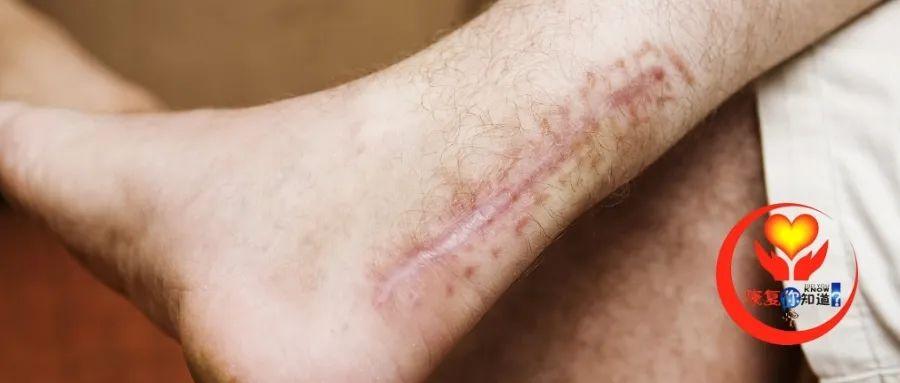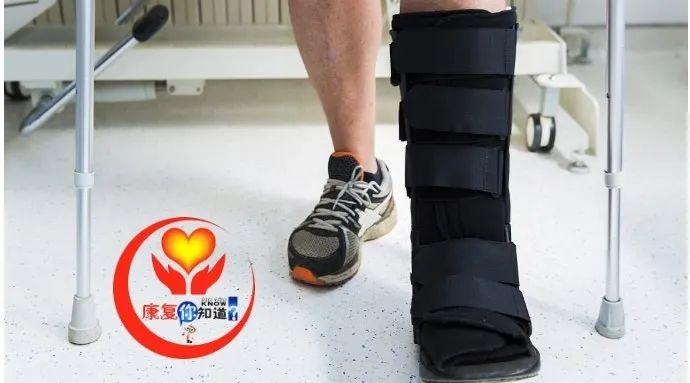The general process of rehabilitation training for Achilles tendon rupture, the main premise of rehabilitation is: safety first, rehabilitation exercise according to their own proprioception.

The first stage after surgery
...
Protection and healing period (weeks 1-6).
Matters needing attention: 1. Avoid passive stretch of the Achilles tendon; 2. The active knee should be flexed at 90°, and the ankle dorsiflexion should be limited to a neutral position (0°); 3. Avoid hot compresses; 4. Avoid prolonged sagging .
Early joint mobility and protected weight bearing are the most important contents in the first postoperative period. Because weight bearing and joint mobility promotes healing and strength of the Achilles tendon, and can prevent the negative effects of immobilization (eg, muscle wasting, joint stiffness, degenerative arthritis, adhesion formation, and deep cerebral thrombus).
Patients were instructed to perform several active joint movements per day, including ankle dorsiflexion, plantar flexion, varus, and valgus. Active ankle dorsiflexion should be limited to 0° at 90° of knee flexion. Passive joint motion and stretch should be avoided to protect the healing Achilles tendon from overstretching or rupture.
When the patient begins partial to full weight bearing, stationary bike exercises can be introduced at this time. The patient should be instructed to use the back of the foot instead of the front foot when cycling. Massaging the scar and light joint movement can promote healing and prevent joint adhesions and stiffness.
Cold therapy and elevation of the affected limb can control pain and edema. Patients should be instructed to elevate the affected limb as much as possible throughout the day and to avoid holding the weight for extended periods of time. The patient may also be advised to apply ice packs several times for 20 minutes each time.
Exercises of the proximal hip and knee should use a progressive resistance training regimen. Open-chain exercises and isotonic machines can be used by patients with restricted weight bearing.
Treatment measures: When using axillary stick or cane under the guidance of a doctor, wear progressive weight bearing under fixed boots with a wheel; active ankle dorsiflexion/plantar flexion/varus/valgus; massage scar; joint loosening; proximal muscle strength exercises; physical therapy ; cold therapy.
Weeks 0-2: Short-leg brace immobilization, ankle in neutral position; partial weight bearing with crutches if tolerated; ice + local compression/pulse magnetic therapy; knee flexion and ankle protection Active plantar flexion, varus, valgus; resistance quadriceps, gluteal, hip abduction training.

3 weeks: Short-leg support immobilized, ankle in neutral position. Progressive partial weight-bearing walking with crutches; active +- assisted ankle plantar flexion/foot varus, foot valgus training (+- balance board training); Accelerates small ankle joint movements (intertarsal, subtalar, tibiotalar) in neutral position; resists quadriceps, gluteal, and hip abduction training.
4 weeks: Active ankle dorsiflexion training; resistance active plantar flexion, varus, and eversion with rubber elastic cords; partial weight-bearing gait training-isokinetic low resistance training (>30 degrees/sec); high sitting low Resistance heel rehabilitation treadmill training.
5 weeks: Remove the ankle brace, and some patients can go to outdoor training; double leg calf raise training; partial weight-bearing gait training-isokinetic moderate resistance training (20-30 degrees/second); low-seat heel rehabilitation treadmill Training; Drifting training (protection during recovery).
6 weeks: All patients removed the braces and performed walking training on the outdoor flat surface; conventional Achilles tendon extension training in sitting position; low resistance (passive) rotational muscle strength training (varus resistance, valgus resistance) two groups; single-leg balance training (The healthy side --- the affected side gradually transitions); walking gait analysis.
Promotion criteria: pain and edema are controlled; weight bearing can be carried out under the guidance of a doctor; ankle dorsiflexion reaches neutral position; proximal lower extremity muscle strength reaches grade 5/5.
Second stage after surgery
...
In the second stage, there were obvious changes in the degree of weight bearing, the increase of the ROM of the affected limb and the enhancement of muscle strength.
Primary goal: To restore sufficient functional range of motion for normal gait and stair climbing. Restore ankle dorsiflexion, varus, and valgus strength to normal grade 5/5. Return to normal gait.
Treatment measures:
Under protection, it can withstand weight-bearing to full weight-bearing practice gait, and can take off crutches when there is no pain; underwater treadmill system practice gait; in-shoe heel pad helps restore normal gait; active ankle dorsiflexion/plantar flexion / varus / valgus exercises; proprioceptive training; isometric / isotonic strength exercises: ankle inversion / valgus.
Early neuromuscular and joint range of motion exercises to promote restoration of proprioception, neuromuscular and balance. As strength and balance are restored, the exercise pattern also transitions from both lower extremities to unilateral lower extremities. Scar massage, physical therapy, and minor joint mobilization should continue as needed.
7-8 weeks: The patient should first wear a brace under the protection of crutches to complete the full weight-bearing of the affected limb, and then get rid of the crutches and wear shoes to fully bear the weight. A heel pad can be placed in the shoe during the transition from the foot brace to the shoe.
The height of the heel pad should decrease as the range of motion of the joint increases. When the patient's gait returns to normal, the heel pad can be dispensed with.
A normal gait is a prerequisite for walking without abduction. Ankle pumps include plantar flexion and dorsi extension. Dorsiflexion means that the toes are hooked back as hard as possible, that is, the foot is forced back to the limit position;
At this stage, mild inversion and inversion isometric muscle strength exercises can be started, and rubber bands can be used to practice in the later stage. Build muscle strength by drawing the shape of the letters with your ankle on a multi-axis device. When sufficient range of motion has been achieved.
You can begin to practice the two main muscles of plantar flexion of the calf. Plantar flexion resistance exercises with knee flexion to 90° can be started 6 weeks after surgery. Plantar flexion resistance exercises with the knee extended can be started by the 8th week.
Plantar flexion can also be practiced at this stage using the knee-extended pedaling device and leg-bending machine. At this time, the fixed bicycle exercise should be carried out with the forefoot, and the amount should be gradually increased. Backward walking on a treadmill enhances eccentric plantar flexion control. These patients often find walking backwards more comfortable because it reduces the need for priming. It is also possible to introduce forward step exercises. The height of the steps can be gradually increased.
Micro-squat with ankle protection (the Achilles tendon is extended under the premise of tolerable pain); three groups of moderate resistance (passive) rotational muscle training (varus resistance, valgus resistance); Toe raises (high resistance soleus training); toe raises with knees straight in the seated position (high resistance gastrocnemius training).
Support the body weight on the balance bar to strengthen autonomous gait training; perform calf raise training +- EMG stimulation in standing position; perform gait re-education under the treadmill; perform rehabilitation treadmill training with the forefoot (about 15 minutes); balance training ( balance board).
9-12 weeks: standing calf triceps extension training; standing calf raise resistance training (toes touch the ground, if necessary, electrical muscle stimulation can be added); forefoot rehabilitation treadmill endurance training (about 30 minutes); foot lift , Landing gait training, each step is 12 inches apart, with concentric and eccentric control; forward uphill walking, reverse downhill walking; trampoline balance training.
Post-rehabilitation
...
Week 16: Flexibility training (Tai Chi); running program starts; multi-point isometric training.
6 months: Comparison of lower extremities; isokinetic exercise test; gait analysis study; single leg calf raise for 30 seconds.
Sichuan CAH
WhatsApp/Wechat: +8615682071283
Email: liuyaoyao@medtechcah.com
Post time: Nov-25-2022










